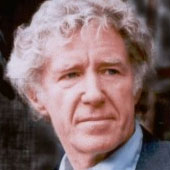Smarter Grids, Appliances and Consumers
How would a more efficient electrical system benefit consumers and the environment?
August 18, 2010
Existing electricity grids are typically a patchwork of local grids that are simultaneously inefficient, wasteful and dysfunctional in that they often are unable, for example, to move electricity surpluses to areas of shortages.
The U.S. electricity grid today resembles the roads and highways of the mid-20th century before the interstate highway system was built. What is needed today is the electricity equivalent of the interstate highway system.
The inability to move low-cost electricity to consumers because of congestion on transmission lines brings with it costs similar to those associated with traffic congestion. The lack of transmission capacity in the eastern United States is estimated to cost consumers $16 billion a year in this region alone.
In the United States, a strong national grid would permit power to be moved continuously from surplus to deficit regions, thus reducing the total generating capacity needed. Most important, the new grid would link regions rich in wind, solar and geothermal energy with consumption centers. A national grid, drawing on a full range of renewable energy sources, would itself be a stabilizing factor.
Establishing strong national grids that can move electricity as needed and that link new energy sources with consumers is only half the battle, however. The grids and appliances need to become "smarter" as well.
In the simplest terms, a smart grid is one that takes advantage of advances in information technology, integrating this technology into the electrical generating, delivery and user system, enabling utilities to communicate directly with customers and, if the latter agree, with their household appliances.
Smart grid technologies can reduce power disruption and fluctuation that cost the U.S. economy close to $100 billion a year, according to the Electric Power Research Institute.
A smart grid not only moves electricity more efficiently in geographic terms, but it also enables electricity use to be shifted over time — for example, from periods of peak demand to those of off-peak demand. Achieving this goal means working with consumers who have "smart meters" to see exactly how much electricity is being used at any particular time.
This facilitates two-way communication between utility and consumer so they can cooperate in reducing peak demand in a way that is advantageous to both. And it allows the use of two-way metering so that customers who have a rooftop solar electric panel or their own windmill can sell surplus electricity back to the utility.
Smart meters coupled with smart appliances that can receive signals from the grid allow electricity use to be shifted away from peak demand. Higher electricity prices during high demand periods also prod consumers to change their behavior, thus improving market efficiency.
For example, a dishwasher can be programmed to run not at 8 p.m. but at 3 a.m., when electricity demand is much lower, or air conditioners can be turned off for a brief period to lighten the demand load.
Another approach being pioneered in Europe achieves the same goal but uses a different technology. In any grid, there is a narrow range of fluctuation in the power being carried. An Italian research team is testing refrigerators that can monitor the grid flow and, when demand rises or supply drops, simply turn themselves off for as long as it is safe to do so.
A similar approach could be used for air conditioning systems in both residential and commercial buildings. Karl Lewis, COO of GridPoint — a U.S. company that designs smart grids — says "we can turn off a compressor in somebody's air conditioning system for 15 minutes and the temperature really won't change in the house."
The bottom line with a smart grid is that a modest investment in information technology can reduce peak power, yielding both savings in electricity and an accompanying reduction in carbon emissions.
Some utilities are pioneers in using time-based pricing of electricity, when electricity used during off-peak hours is priced much lower than that used during peak hours. Similarly, in regions with high summer temperatures, there is often a costly seasonal peak demand.
Baltimore Gas and Electric (BGE), for example, conducted a pilot program in 2008 in which participating customers who permitted the utility to turn off their air conditioners for selected intervals during the hottest days were credited generously for the electricity they saved.
Within the United States, the shift to smart meters is moving fast, with some 28 utilities planning to deploy smart meters in the years ahead. Among the leaders are California's two major utilities, Pacific Gas and Electric and Southern California Edison, which are planning on full deployment to their 5.1 million and 5.3 million customers by 2012. Both will offer variable rates to reduce peak electricity use.
Among the many other utilities aiming for full deployment are American Electric Power in the Midwest (5 million customers) and Florida Power and Light (4.4 million customers).
Europe, too, is installing smart meters, with Finland setting the pace. A Swedish research firm, Berg Insight, projects that Europe will have 80 million smart meters installed by 2013.
Unfortunately, the term "smart meters" describes a wide variety of meters, ranging from those that simply provide consumers with real-time data on electricity use to those that facilitate two-way communication between the utility and customer or even between the utility and individual household appliances. The bottom line: The smarter the meter, the greater the savings.
Taking advantage of information technology to increase the efficiency of the grid, the delivery system and the use of electricity at the same time is itself a smart move. Simply put, a smart grid combined with smart meters enables both electrical utilities and consumers to be much more efficient.
Takeaways
Read previous
Could Greece Go Over the Cliff?
August 17, 2010
